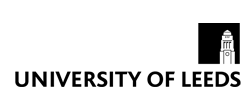Publications
Electronic publications
The STN database went live on 25 June 2012 in both its online and downloadable forms. The online version was accompanied by full instructional materials both text and video.
Podcasts and conference papers
A variety of podcasts of conference papers and public lectures by Simon Burrows, Mark Curran and Vincent Hiribarren are available via the Seminars and Conferences section of this website. This section also offers a full list of papers and presentations by project participants.
In print
- Mark Curran, '"Mettons toujours Londres": enlightened Christianity and the public in pre-revolutionary francophone Europe', French History 24 (2010), 40-59.
- Mark Curran, 'The Société typographique de Neuchâtel and networks of trade and translation in eighteenth-century francophone Europe' in Ann Thomson, Simon Burrows and Edmond Dziembowski, eds, Cultural Transfers: France and Britain in the Long Eighteenth Century (Oxford: Voltaire Foundation, 2010), pp. 257-67.
Forthcoming articles
- Simon Burrows, 'French Banned Books in International Perspective, 1770-1789' in Experiencing the French Revolution, ed. by David Andress, SVEC 2012
- Mark Curran, 'Beyond the Forbidden Best-Sellers of pre-Revolutionary France’, in The Historical Journal.
Work in progress
- Mark Curran, Selling Enlightenment, single-authored monograph, currently in preparation for Continuum press, to be published late 2012. This book is his principal output from the ‘French Book Trade’ project. The product of four years of archival research, it radically revaluates the eighteenth-century European book trade in the light of the STNs sales figures, which are revealed for the first time (ISBN: 9781441178909).
- Simon Burrows, Enlightenment Best-Sellers, single authored monograph currently in preparation for Continuum for publication in 2013, and his principal output from the French book trade project. Building on Mark Curran's volume, this book offers a reconsideration of the print culture of the late enlightenment based on the sales figures of the STN. Like the first volume, it also discusses the ways in which digital humanities methods have been used in the French book trade project to reopen old questions, often with intriguing results.

